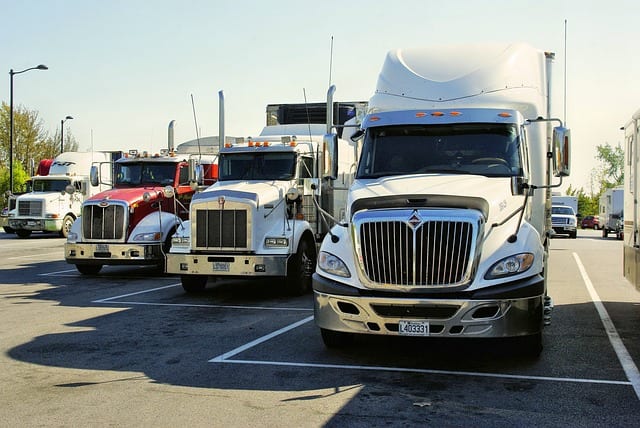In an industry that prides itself on linking businesses and people together who do otherwise not meet in person, transportation is an important part of the equation. These big empty convention halls get filled up for each trade show and event not only with booth staff, event personnel and attendees, but also truckloads of materials to create and fill the boothspaces. The freight process can be tricky at times if you’re unfamiliar, so here are some good things to know about trade show/event freight:
Advanced Warehouse versus Direct-to-Show Shipments
Most of the time show decorators use their warehouse to accept shipments and stage all of the items to be delivered just ahead of the start of the events. The warehouse will generally have a large window of dates in which they accept shipments before a particular show. This allows exhibitors to ship their freight in slower, less precise ground methods (more economical) and it allows the show decorators to receive shipments over time as opposed to all at once.
Direct-to-show shipments, on the other hand, have very specific date and time windows that can be costly or nearly impossible to accommodate. Having this option is necessary for any last minute items or emergency replacements, but should definitely be avoided as it will be costly and likely have no guarantee of getting to your space in a timely manner.
Wait Time
Freight runs on a tight margin, and for the truck drivers time is money. For this reason, the majority of carriers charge wait time for the time their trucks are in line to drop-off or pick-up freight from a show or warehouse. This time is typically charged in half-hour increments and adds up fast. We’ve found a couple of carriers that charge a little more up front, but include the wait time. This allows for our clients and ourselves to properly budget freight without a huge unknown charge coming in after the show for wait time.
Venue Specifics
Many of our clients are planning and attending smaller events and conferences that are held in venues that may not be as equipped for freight as the larger convention halls. Some venues do not have loading docks or freight elevators, and some might not even have any wide entryways. Within the venue maneuvering through a narrow hall or a tight turn can prevent materials from getting to the room or space where an exhibitor is setting up. Make sure you know the dimensions of the items you’re shipping and have an idea of where there could be issues along the path to the space.
Buffer Days
Build in extra days when shipping to allow for the unexpected. This industry spans from coast to coast and beyond. Often there is a natural event occurring somewhere, whether flood, blizzard, ice, hurricane, tornado or a combination. There are also items that are misdirected or trucks that break down and an number of other issues that can pop up. These can all quickly throw off the delivery date so build in an extra day or two to be safe.
Damage or Loss
Items being damaged or lost in shipment is more common than some may realize. Read the fine print that pertains to how the carrier will respond to those situations. Pay close attention to coverage amounts and required specifics for making claims. Many of the more cost effective carriers are limiting the amount of coverage to lower amounts like $500. That obviously does little help if a $50,000 exhibit is badly damaged or lost. Also be mindful that the container itself (hard case, crate, etc) is not covered, so you could end up with $1,000 in crate damages from a forklift going through the side of your crate.
We will only utilize carriers that can insure the full cost of the materials shipped. We also take pictures of the packed freight before it is picked up to compare to how it is delivered.
International Shipments
The difficulty of shipping outside of the United States varies greatly depending on the destination country. Try to work with a local broker who can give you insight on expected time in customs, best practices to clear customs and support on the ground in the country. I have heard stories of bribery, theft, special labeling and designation and customs issues among other international shipping nightmares. Find someone that knows the routine and have a plan b just in case.
Freight is a crucial part of the industry that can be challenging to manage well. Gaining experience and finding trusted carriers are the two biggest helps in shipping success. Allowing extra time and having a backup plan can save an exhibitor’s show. Industry veterans, we would love to hear about what you’ve learned about shipping along the way that we can relay to the newcomers. We’re fortunate to have one of those veterans in our office, so if you need help feel free to ask us!
